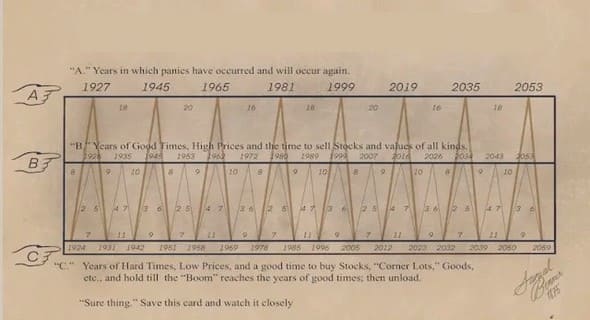(Downloads - 0)
For more info about our services contact : help@bestpfe.com
Table of contents
1 General introduction
1.1 Photovoltaics in the energy production
1.2 Photovoltaic solar cells
1.2.1 Photovoltaic cells’ working principle
1.2.2 Basics of PV solar cells
1.2.3 Efficiency limiting factors
1.2.4 Photovoltaic solar cell technologies
1.3 Objectives of this work
2 State-of-the-art
2.1 Silicon heterojunction solar cells
2.2 Measuring series resistance
2.3 Measuring contact resistance
2.3.1 The transfer length method (TLM)
2.3.2 Transfer length model for a two-layer system
2.4 Resistive power loss analysis
2.5 Charge transport in SHJ cells
2.5.1 TCO/Ag contact
2.5.2 Transport through the interfaces of SHJ cells
2.5.3 Lateral transport in SHJ cells
2.5.4 Cell inhomogeneity and impact on transport
2.6 Chapter outlook
3 Characterization & fabrication processes
3.1 Fabrication of SHJ cells at CEA industrial pilot line
3.2 Effective lifetime measurements
3.3 Luminescence techniques for imaging
3.4 Ellipsometry
3.5 I-V measurements
3.6 Review of the different 𝑅𝑆 measurement methods
3.7 Numerical simulation on Silvaco Atlas
3.7.1 Simulation parameters
3.7.2 Simulating solar cell performance
3.7.3 Simulating TLM samples
3.8 Contact resistance measurement
3.8.1 Improving the measurement precision of contact resistivity
3.8.2 Technical implementation of the TLM
3.9 Chapter outlook
4 Development of methods to measure contact resistance in SHJ cells
4.1 Measuring the ITO sheet resistance and ITO/Ag contact with high fidelity to SHJ structure
4.1.1 4-point probe measurement of ITO sheet resistance
4.1.2 Insulating the TCO layer from the c-Si to measure Ag/TCO contact resistance and sheet resistance of the TCO
4.1.3 Simulation of Ag/ITO TLM samples
4.2 Measuring the electron and hole contact layers in SHJ structures
4.2.1 Development of a process for the fabrication of structures for electron and hole contact resistivity measurement
4.2.2 Measurement of the electron and hole contact resistivities
4.2.3 Discussion of the approach
4.3 Chapter outlook
5 Impact of varying the fabrication process on SHJ cells and on the electron contact
5.1 Influence of the c-Si substrate doping
5.1.1 Influence of c-Si doping on J-V parameters
5.1.2 Influence of c-Si doping on effective lifetime
5.1.3 Influence of c-Si doping on the electron contact properties
5.1.4 Analysis of the 𝑅𝑆 variation with c-Si doping
5.2 Integrating alternative TCOs
5.3 Varying the thickness of the front stack layers
5.3.1 ITO thickness
5.3.2 Varying the a-Si:H(i) layer thickness
5.3.3 Varying the a-Si:H(n) layer thickness
5.3.4 Breakdown of the electron contact
5.4 Chapter outlook
6 Impact of varying measurement conditions on SHJ cells and contacts
6.1 Effect of measurement conditions on the determination of the Ag/ITO contact resistance
6.1.1 Temperature
6.1.2 Illumination
6.2 Effect of measurement conditions on electron and hole contact resistance
6.2.1 Dependence of c-Si resistivity versus temperature and illumination
6.2.2 Variation of the electron and hole contact resistance with temperature
6.2.3 Variation of the electron and hole contact resistance with illumination
6.3 Chapter outlook
7 Resistive power loss analysis for bifacial SHJ cells
7.1 Lateral transport in SHJ cells
7.1.1 Two-layer TLM with interface and contact resistances
7.1.2 Resistive power loss due to lateral transport
7.2 Comparison of the models with experimental data
7.3 Resistive loss breakdown for a standard CEA SHJ cell
7.4 Impact of the electron and hole contacts on 𝑅𝑆
7.5 Chapter outlook
General conclusion and perspectives
Appendices
Appendix 1: Demonstration of the transmission line model of the standard TLM
Appendix 2: Demonstration of resistive power loss
Appendix 2 (a): Resistive losses from lateral current in the emitter
Appendix 2 (b): Resistive losses due to the contact:
Appendix 2 (c): Resistive losses from the fingers
Appendix 2 (d): Resistive losses due to busbars
Appendix 2 (e): Resistive losses from transverse current in the bulk c-Si
Appendix 2 (f): Note on the generation hypothesis
Appendix 3: Demonstration of measurement methods of 𝑅𝑆
Appendix 3 (a): Dual light method
Appendix 3 (b): Multi-light method
Appendix 3 (c): Dark-light method
Appendix 3(d): Comparison between Jsc-Voc & J-V curves
Appendix 4: Haschke et al.’s model for power loss analysis
Contributions
References


